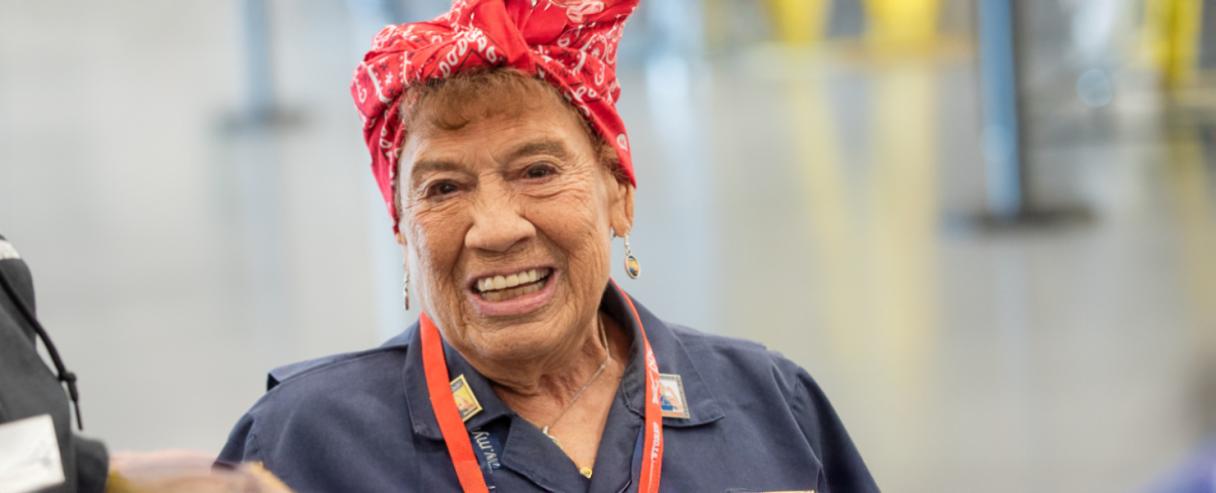During World War II, more than six million women entered the workforce as men went off to fight. They took on a variety of roles, including typists, farm workers, taxi and bus drivers, as well as factory and shipyard workers. Many found themselves on assembly lines producing munitions and other war supplies. To encourage women to step into these roles, propaganda campaigns urged them to "Do the job he left behind." This gave rise to the iconic figure of Rosie the Riveter—a symbol of the hardworking women who supported the war effort.
One such Rosie was Connie Palacioz (left). Now 93, she shared her story during a program at the Eisenhower Presidential Library in March. After graduating from high school, Palacioz took a job at Boeing in Wichita, Kansas, where she trained for two weeks as a riveter, initially earning $0.50 per hour. Once she was ready for the B-29 assembly line, her pay increased to $0.75 per hour. All she needed was a bucker—the person who worked inside the plane, holding a metal bar against the rivets to secure them in place.
Palacioz found her bucker in Jerri Warden, a worker no one else would partner with because she was Black. Palacioz, who was Hispanic, had no hesitation about working with Warden. It turned out to be an excellent partnership—the two women became a skilled team, producing four B-29 nose sections per day.
Decades later, Palacioz experienced an unexpected reunion with a bomber she had helped build. A B-29 Superfortress, nicknamed "Doc," was discovered in the California desert after sitting untouched for 42 years. In 2000, Doc was transported back to Wichita for restoration.
"When I first saw the plane, it was in pieces!" Palacioz recalled. However, the nose section—the very part she and Warden had built—remained mostly intact, except for broken glass. Incredibly, only seven rivets were missing from their work.
Determined to see the plane fly again, Palacioz joined the restoration effort, volunteering three days a week for 16 years. The moment Doc finally took to the skies was deeply emotional for her.
"I cried when I saw it fly," she said, "thinking of the people who worked on the restoration but passed away before they could see it completed."


